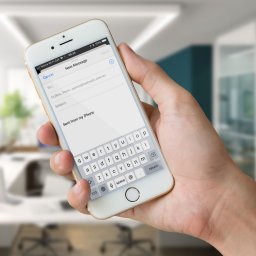Before we begin, I would like to say that if you are paying anyone to develop and/or manage your website, they should be on top of all this because these are very basic website tips that apply to real estate and non-real estate websites. These tips are also very basic and the first 4 should be able to be fixed by anyone with the right access.
1. Correct REA listing
Let’s open with a no-brainer. Realestate.com.au is obviously the biggest real estate website in Australia and it is a leader in most, if not, all markets. Many customers will find you from links on realestate.com.au. It sounds crazy, but in our experience of using realestate.com.au for marketing Realmatic REspond, we have found soooo many dead links on agent website listings! About one in fifty does not work because it is spelled wrong, out of date or points to a landing page that does not exist.
Check your website listing by going to https://www.realestate.com.au/find-agent, searching your agency then clicking your “website” link.
2. Team and profile photos
I personally have two pet hates with team and profile photos. The first is when profile photos are obviously a photo of someone on a night out. You know the ones – shiny skin, big smile, looking good – these are great Facebook profile photos but they do not belong in a professional environment. If your Facebook photo is in use because you don’t have a professional photo yet, my advice is to simply take one. Phone cameras are more than adequate now. The only other thing you need is some natural lighting and your photo will be more professional than your party pic.
The other pet hate is weird and unnatural poses. Three classic examples are:
- arms crossed with extended “spirit fingers”
- head turned at 90 degrees
- using a phone
There’s a lot to be said about crossed arms in terms of body language but it can work if that is the desired look – just watch what your fingers are doing because if they look strange, the whole look is ruined.
A turned head is normal, but 90 degrees should be left for 80’s album covers.
And regarding the phone action-shot, this is ok and can look good if the staff member is the receptionist and the other staff photos are taken in the office. If everyone is on the phone, it looks very strange.
3. Email addresses
In the not-to-recent past, it was normal to not publish an email address on your website to avoid getting spam, however, our email providers are now very good at fighting spam so email addresses are good to have. Some websites force people who are wishing to contact the agency to use a webform which many customers and potential clients may not like. And some websites only have one main address for public viewing. Unless you have a very specific reason for not sharing your staff email addresses, it is highly recommended to display them – if nothing else, it will save the “what’s-his-email-address” phone calls.
Another note on email addresses to avoid using underscores in your names. Use periods (“dots”) simply because it’s the norm. You will may also find that some people don’t know what an underscore is (especially if there is a language barrier) and this makes it difficult to give an email address over the phone.
4. Images
Never ever EVER display an image that is stretched out of proportion. It looks horrible and your first impression will suffer. If you need to fill a space with an image, edit it first by cropping it to the correct size. And avoid over enlarging images because as they get larger than their original size, their quality declines.
Also avoid using non-professional images to display your office or local area. Your website might be perfect in every other way, but a bad hero or background image can really bring the quality down. If you have an image that you really want to use, consider sending it to Box Brownie because they can make an amateur image look professional for around $5.
5. Site speed
All the above tips can be fixed DIY, but if your site speed is a problem, you may need the help of your developer or your hosting company. Site speed is important for two reasons: user experience and SEO (search engine optimisation). The use experience is important because if a user is quickly checking out agents on a Google search and can’t open your site in the 2 or 3 seconds they expect, they will move on. I’ve personally recently experienced 7s+ delays on two large franchise sites and I thought their websites were down!
Your site speed also affects your SEO. Google will rank faster pages higher than slower ones so that it too can provide their users (your potential clients) with a better experience. Google’s PageSpeed Insights will give you suggestions on how to increase the speed of your website – visit https://developers.google.com/speed/pagespeed/insights/ and enter your website to see how it performs then send the result to your developer if you need to.
These 5 tips are some basic essentials and we look forward to blogging about some more detailed and slightly more technical tips in the future.
Remember, your website is like your shopfront for those who haven’t visited you yet!





